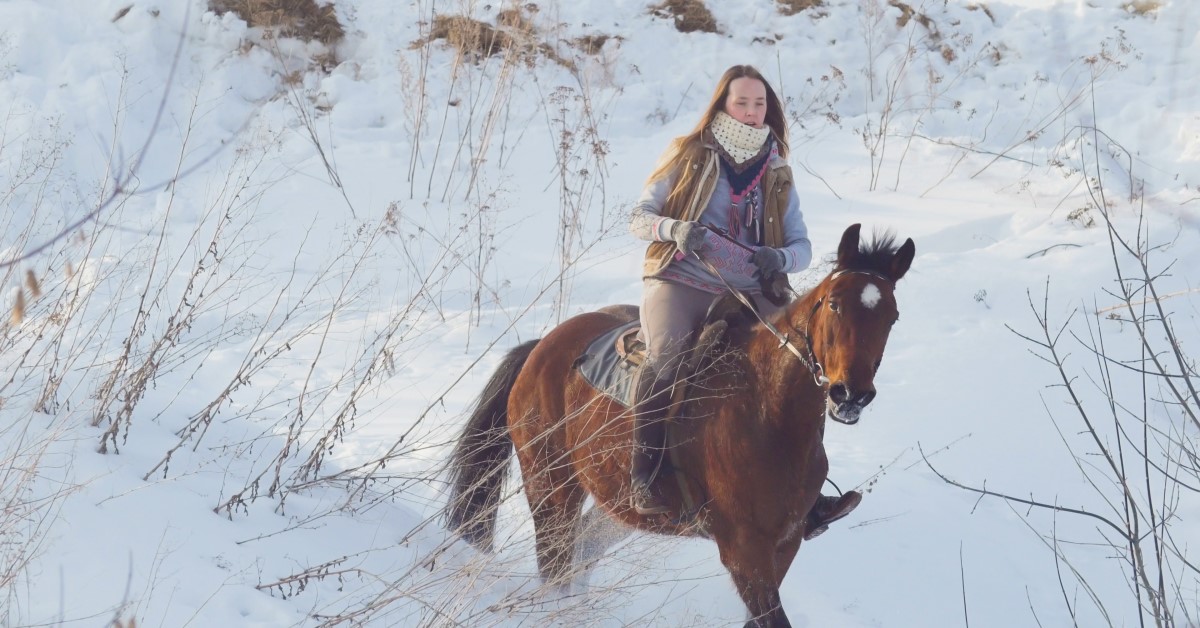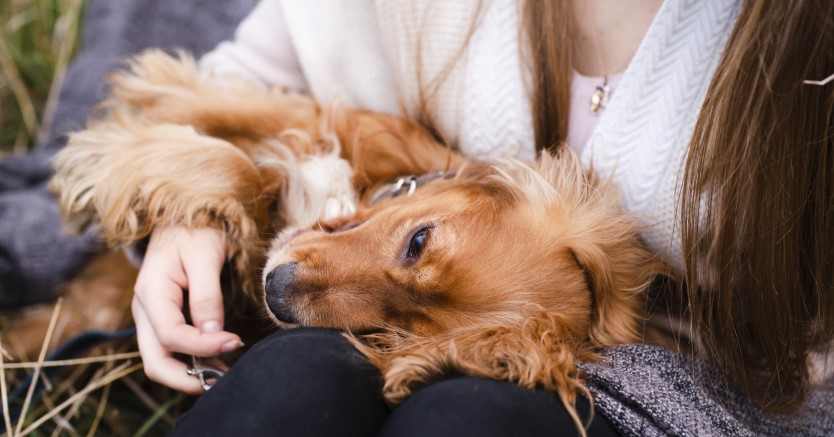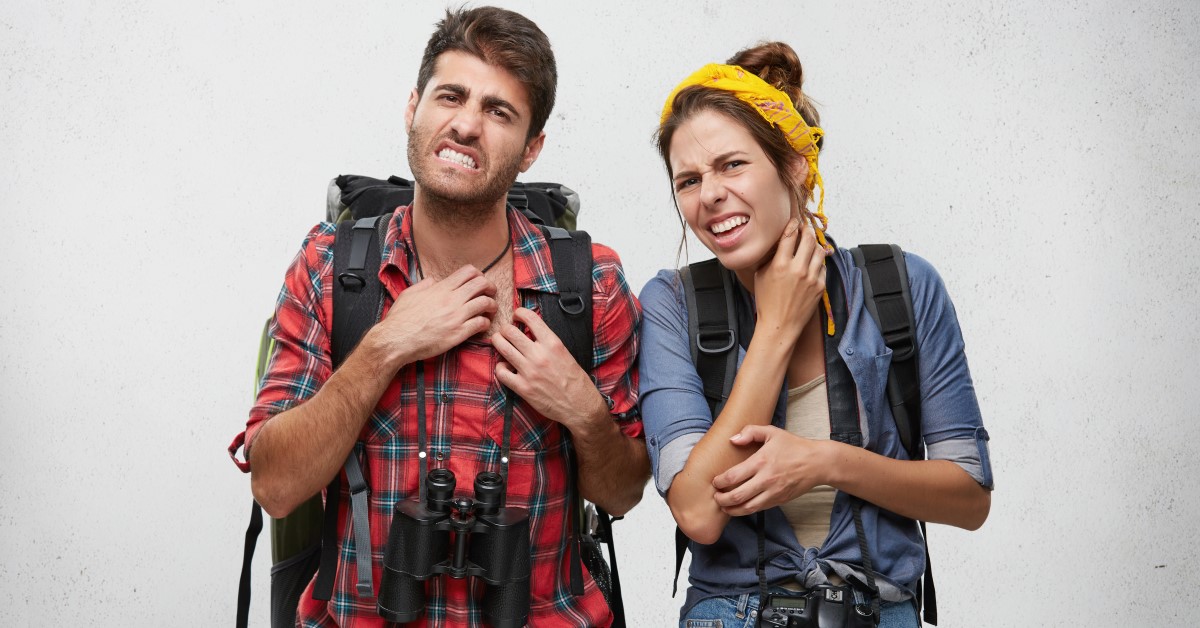Dashing Through the Snow: How to Enjoy Winter Riding While Staying Safe
Staying safe while enjoying the beauty and magic of winter trail riding

You dream of riding your horse through fields and forests filled with a winter wonderland of sparkling snow. The warmth of your horse’s body serves as a natural furnace, keeping you warm as you smell the musty odor of his body. His nostrils spew steam into the cold air, and his hooves send powdery snow flying. When you come to a stream, you stop and gaze with wonder at the vision of water trickling up through shards of shimmering ice.
A blissful experience? For sure, but winter riding requires careful preparation as well as cautious traveling on tricky footing while in the saddle. Before you embark on that ride into a frozen fairy-tale, here are some things to consider.
What to Wear
Yes, to enjoy your winter ride means you need to be comfortable and warm. Sounds simple, but it’s the difference between a wonderful experience and one fraught with misery. Think several loose, water-resistant layers with an insulation layer next to your body to retain your body heat. Make sure the sleeves are long enough to cover your wrists. Depending on the temperature, cover all this with either a high-quality insulated vest or a water-resistant and wind-proof jacket.
A helmet is an absolute must, and you can add a skin-tight hat under it or earmuffs to keep your ears from getting frostbite. Mittens will keep your hands warm but may not be practical for handling the reins. You can buy winter riding gloves, or else, wear warmer gloves and consider purchasing hand warmers. You can also buy foot warmers to put in your boots.
Your Horse’s Turn: The Hooves
If you know you’re going to ride through the snow in the winter, then you need to make sure your horse is either barefoot or has special shoes that have a pad underneath to keep the snow from balling up in his hooves. With regular shoes, the snow will accumulate in the snow and produce snowballs that create dangerous balance issues for your horse. This is a recipe for disaster for you both.
The Bit
Whether you are off for a trail ride or going to ride indoors, putting a cold bit in your horse’s mouth is like sticking your tongue on a cold metal pole. Warming the bit can involve everything from putting it inside your shirt and next to your body while you tack him up to purchasing an actual bit warmer.
His Fitness
Carrying you through deep snow is an extra-strenuous effort for your horse. Consider his overall conditioning and the weather/snow conditions before you set out, especially if you are considering going long distances in deep snow. Before you set out, be sure to warm him up by working him slowly for 10 to 15 minutes.
The longer your horse’s coat, the sweatier he will become, especially carrying you through deeper snow. True, his body is a wonderful seat warmer, but when you get home, you’ll need to spend a considerable amount of time making sure he is thoroughly dried off before you put his blanket on if he has one or before putting him back in his stall.
Riding in Winter Situations
It’s important that you carefully think about your riding plan for winter riding. Riding in an indoor ring, enclosed outdoor ring, or trail requires different approaches. Additionally, it’s never a good idea to ride alone, but it’s especially important not to go alone when riding out on the trail.
Be aware that many horses become frisky when it is cold and can become harder to handle. This can be a concern if you have difficulty controlling your horse when it is snowy and icy.
Indoor Ring
How you dress is an important concern if you are riding indoors, though you won’t need to worry about precipitation and wind. Still, keeping your hands and feet warm is important. Remember to warm up your horse’s bit before putting it in his mouth. It’s also important to make sure your horse is completely cooled and dried off before putting him away.
Enclosed Outdoor Ring
You need to consider wind, weather and temperature when dressing for an outdoor ride. When there is snow on the ground, your horse needs to be barefoot or have winter padded shoes on. Be sure to warm up the bit, and make sure he is dry after your ride.
The Trail
Trail riding can mean many things, such as riding through open fields, through wooded areas, up and down hills, and along back country roadways. Riding out on the trail requires extra planning to ensure you and your horse stay safe. The following is a list of to-do items:
- Check the weather report: do avoid trail riding when bad weather is predicted to move in, even if the weather is fine when you want to start out.
- Make sure you are dressed for the conditions.
- Find someone who will go with you.
- Tell someone else where you plan to go.
- Bring along some water: even though it is cold, you still need to stay hydrated.
- Bring along your cell phone.
- Be prepared for whatever footing you may encounter and develop a plan for how to handle it.
Ice
Simply put, avoid ice! Horses are confident about dealing with different types of footing, but they are not comfortable on the ice. Nor should they be; however, one of the dangers of winter trail riding is that you can’t see ice when it’s covered by snow. Also, road surfaces that are filled with slush and snow can be perilous when riding.
So, what do you do if you suddenly find you and your horse are on ice? Your horse will sense the ice underfoot and may become nervous. You need to stay calm to keep him calm, and you need to get both of you off that ice as quickly, gently, and smoothly as possible.
Deep Snow and Snow Drifts
Carrying a rider through deep snow is tiring for a horse, and snowdrifts can be hard to see. Both can hide dangers lurking underneath, such as deep holes or gullies, either of which can cause a horse to panic and possibly get hurt.
Packed Snow
Snow that has been firmly packed down can be extremely slippery and treacherous. Avoid riding on packed snow and ride on “new” snow as an alternative.
Exploring a sparkling wonderland on a clear, quiet winter day is one of those things you will always remember. But winter riding requires thought and planning for it to be a truly magical and safe experience for you and your horse.
Ready to start saving money on pet wellness care?
Then take a look at Mint Wellness, the pet wellness plan that provides fast reimbursement on routine pet care. Save on vaccinations, wellness exams, preventatives, dental, and more!
Learn More


